Stéphane Treilhou
Curator Fine Arts Gallery
Department of Art History and Fine Arts
Tel: +00 1 40 62 06 33
streilhou![]() aup.edu
aup.edu
- About AUP
- History of AUP
- Mission & Core Values
- Vision and Leadership
- AUP Recognition
- Alumni Success
- Campus Development
- Arts at AUP
- Policies & Guidelines
- Academics
- Undergraduate
- Graduate Programs
- MA in Diplomacy and International Law
- MA in Global Communications
- MSc in Human Rights and Data Science
- MA in International Affairs
- MA in International Affairs, Conflict Resolution, and Civil Society Development
- MSc in International Management
- MSc in Strategic Brand Management
- Find Your Thesis Advisor
- Previous Programs
- Cultural Program
- Faculty
- Summer School
- Research Centers
- The Center for Critical Democracy Studies
- Upcoming Events
- Research Projects
- Fellows’ Publications
- Publishing
- Curriculum
- Community
- Visiting Scholars
- CCDS Highlights
- Atelier de Théorie Politique – Paris
- Critical Theory 101: Future Directions and New Challenges
- Martti Koskenniemi on “The Law of International Society: A Road not Taken”
- Academic Freedom Symposium
- Tocqueville Colloque 2023
- Violent Turns Conference
- Degenerations of Democracy
- DEMOS21 Inaugural Event
- What Demos for the 21st Century?
- The Paris Centennial Conference
- Justice Stephen Breyer
- Civic Jazz - The Launch of the Center
- Past Events
- The Center for Writers and Translators
- The George and Irina Schaeffer Center for the Study of Genocide, Human Rights and Conflict Prevention
- The Joy and Edward Frieman Environmental Science Center
- The Center for Media, Communication & Global Change
- The Center for Critical Democracy Studies
- Departments
- Academic Resources
- Academic Affairs
- Academic Calendar
- Academic Resource Center
- Library
- Registrar's Office
- Teaching and Learning Center
- Employer Network
- Accessibility & Accommodation Services
- AI@AUP: A Campus-Level Initiative
- Quai D'Orsay Learning Commons
- Paris as Classroom
- ACE Center
- Admissions
- Student Life
- Campus
- Student Leadership & Involvement
- Paris
- Support Services
- Student Development Help Desk
- Student Accounting Services
- Student Immigration Services
- Student Grievance Procedure
- Diversity and Inclusion
- Health & Well-being
- Digital Student Handbook
- News
- Events
- AUP Giving
- Housing Offer for 2024-2025
- IT Services
- Alumni
- About AUP
- History of AUP
- Mission & Core Values
- Vision and Leadership
- AUP Recognition
- Alumni Success
- Campus Development
- Arts at AUP
- Policies & Guidelines
- Academics
- Undergraduate
- Graduate Programs
- MA in Diplomacy and International Law
- MA in Global Communications
- MSc in Human Rights and Data Science
- MA in International Affairs
- MA in International Affairs, Conflict Resolution, and Civil Society Development
- MSc in International Management
- MSc in Strategic Brand Management
- Find Your Thesis Advisor
- Previous Programs
- Cultural Program
- Faculty
- Summer School
- Research Centers
- The Center for Critical Democracy Studies
- Upcoming Events
- Research Projects
- Fellows’ Publications
- Publishing
- Curriculum
- Community
- Visiting Scholars
- CCDS Highlights
- Atelier de Théorie Politique – Paris
- Critical Theory 101: Future Directions and New Challenges
- Martti Koskenniemi on “The Law of International Society: A Road not Taken”
- Academic Freedom Symposium
- Tocqueville Colloque 2023
- Violent Turns Conference
- Degenerations of Democracy
- DEMOS21 Inaugural Event
- What Demos for the 21st Century?
- The Paris Centennial Conference
- Justice Stephen Breyer
- Civic Jazz - The Launch of the Center
- Past Events
- The Center for Writers and Translators
- The George and Irina Schaeffer Center for the Study of Genocide, Human Rights and Conflict Prevention
- The Joy and Edward Frieman Environmental Science Center
- The Center for Media, Communication & Global Change
- The Center for Critical Democracy Studies
- Departments
- Academic Resources
- Academic Affairs
- Academic Calendar
- Academic Resource Center
- Library
- Registrar's Office
- Teaching and Learning Center
- Employer Network
- Accessibility & Accommodation Services
- AI@AUP: A Campus-Level Initiative
- Quai D'Orsay Learning Commons
- Paris as Classroom
- ACE Center
- Admissions
- Student Life
- Campus
- Student Leadership & Involvement
- Paris
- Support Services
- Student Development Help Desk
- Student Accounting Services
- Student Immigration Services
- Student Grievance Procedure
- Diversity and Inclusion
- Health & Well-being
- Digital Student Handbook
- News
- Events
- AUP Giving
- Housing Offer for 2024-2025
- IT Services
- Alumni
- About AUP
- History of AUP
- Mission & Core Values
- Vision and Leadership
- AUP Recognition
- Alumni Success
- Campus Development
- Arts at AUP
- Policies & Guidelines
- Academics
- Undergraduate
- Graduate Programs
- MA in Diplomacy and International Law
- MA in Global Communications
- MSc in Human Rights and Data Science
- MA in International Affairs
- MA in International Affairs, Conflict Resolution, and Civil Society Development
- MSc in International Management
- MSc in Strategic Brand Management
- Find Your Thesis Advisor
- Previous Programs
- Cultural Program
- Faculty
- Summer School
- Research Centers
- The Center for Critical Democracy Studies
- Upcoming Events
- Research Projects
- Fellows’ Publications
- Publishing
- Curriculum
- Community
- Visiting Scholars
- CCDS Highlights
- Atelier de Théorie Politique – Paris
- Critical Theory 101: Future Directions and New Challenges
- Martti Koskenniemi on “The Law of International Society: A Road not Taken”
- Academic Freedom Symposium
- Tocqueville Colloque 2023
- Violent Turns Conference
- Degenerations of Democracy
- DEMOS21 Inaugural Event
- What Demos for the 21st Century?
- The Paris Centennial Conference
- Justice Stephen Breyer
- Civic Jazz - The Launch of the Center
- Past Events
- The Center for Writers and Translators
- The George and Irina Schaeffer Center for the Study of Genocide, Human Rights and Conflict Prevention
- The Joy and Edward Frieman Environmental Science Center
- The Center for Media, Communication & Global Change
- The Center for Critical Democracy Studies
- Departments
- Academic Resources
- Academic Affairs
- Academic Calendar
- Academic Resource Center
- Library
- Registrar's Office
- Teaching and Learning Center
- Employer Network
- Accessibility & Accommodation Services
- AI@AUP: A Campus-Level Initiative
- Quai D'Orsay Learning Commons
- Paris as Classroom
- ACE Center
- Admissions
- Student Life
- Campus
- Student Leadership & Involvement
- Paris
- Support Services
- Student Development Help Desk
- Student Accounting Services
- Student Immigration Services
- Student Grievance Procedure
- Diversity and Inclusion
- Health & Well-being
- Digital Student Handbook
- News
- Events
- AUP Giving
- Housing Offer for 2024-2025
- IT Services
- Alumni
Permanent Collection
The American University of Paris is pleased to maintain its own permanent collection of art from a wide variety of artists. You will see many styles here, many personalities whose aesthetics vary, cross over, and diverge. In naure, diversity is always an indication that the forest is alive and in good health. This multifaceted group of works reflects the spirit of the international climate found at AUP.
Please note that The American University of Paris also has a number of artworks exhibited on long-term loan. These works will be returned to the lenders as AUP's collection grows.
Permanent Collection by Artist:
Nathalie Debroise
I try to photograph intimacy, nudity, transparency and opacity, capturing the darkness that haunts the eyes of women, revealing the ambivalence that is, in my view, the very essence of seduction. Gorgon, medusa, amazon fig- ures of warrior women nourish my personal mythology. Is photography a kind of therapy? Perhaps. What inspires my pictures is the phantasmagorical bond I share with my models, a complicity that is created in the construction of a new form of sexual identity far removed from maternal images, far from pornographic icons. No stolen images, no violation, no voyeurism. It is, rather, a game, a return to the freedom and openness of childhood, the freedom to be ambiguous, where the barriers between masculine and feminine are blurred and uncertain.
Artwork
Left to right: Meduse; Meduse bras; Meduse regard bas; (all photograph 30cm x 20cm)
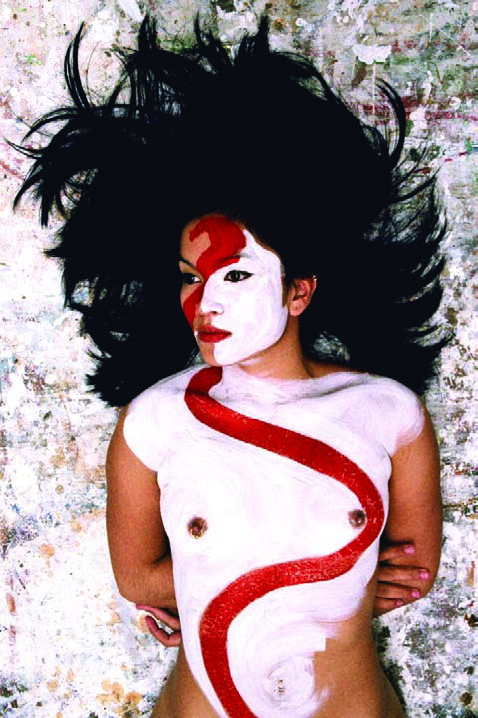
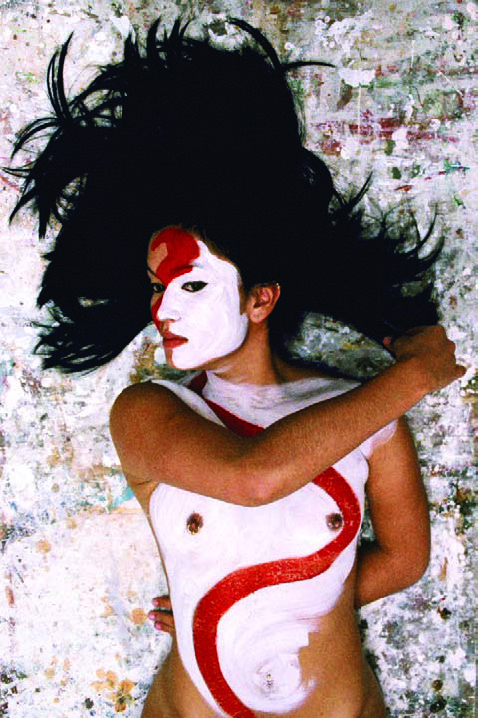
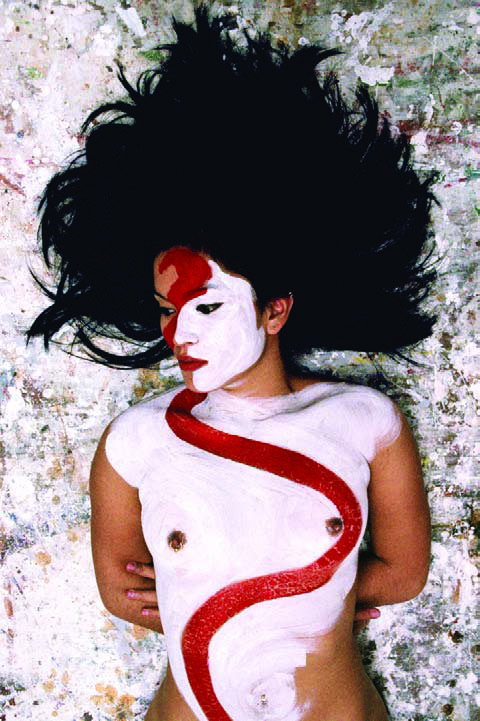
Clara DeLamater
The essence of the gesture translates my perceptions. I want to be the sand, the wind, the space, and the silence which carry the stamp of architectural poetry of different worlds. I bring up from deep inside myself the ultimate story which I discover and recognize. People, lands, sym- bols, environments and sounds are sources of emotion. My donation to AUP is a bronze low relief of my father, Lloyd DeLamater, who was the founder and first president of AUP in 1962.
Artwork
Detail from Portrait of Lloyd DeLamater, bronze, 38cm x 30cm x 2cm
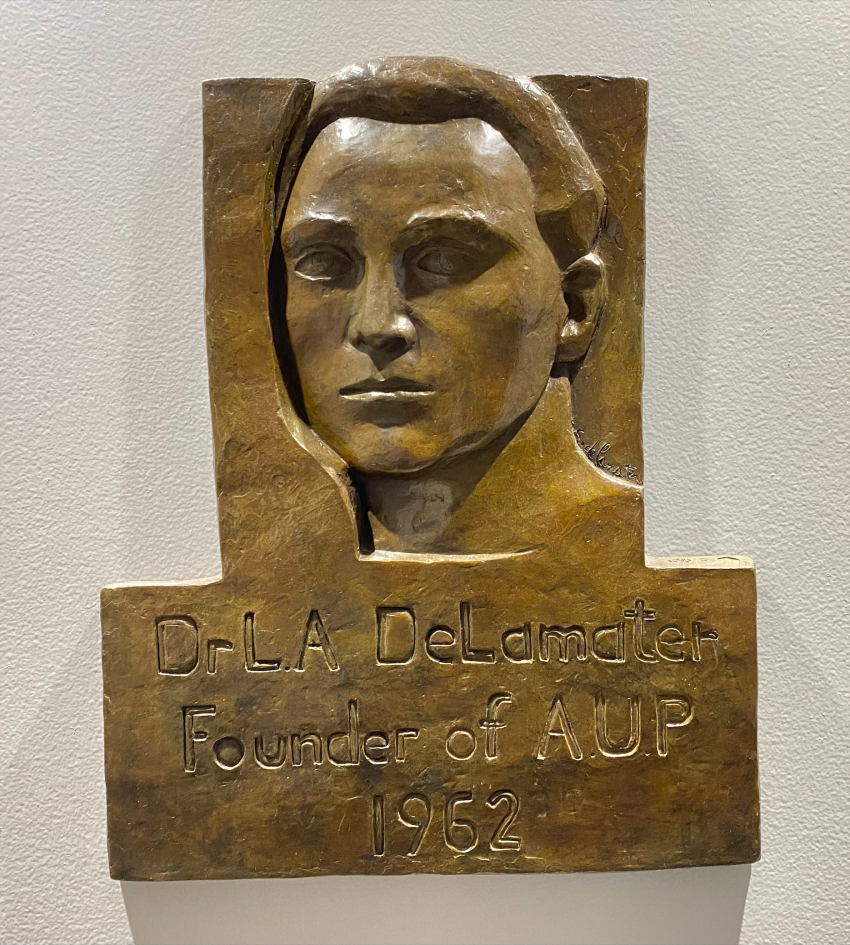
Janne M. Greibesland
As for my work I would humbly align my self with the passage by Edvard Munch; “...a work of art origins solely from the interiority of man. Art is a form of the image made of the nerves, the heart, the brain, the eyes of man, and nature is the only great realm from which art obtains its lifeblood, not the nature which offers itself passively to the eye, but the one concealed behind the eyes...”
This work was donated by Willem Peppler, former chair of the Board of Trustees at AUP and international art collector.
Artwork
Dice, acrylic on canvas, 150cm x 150cm
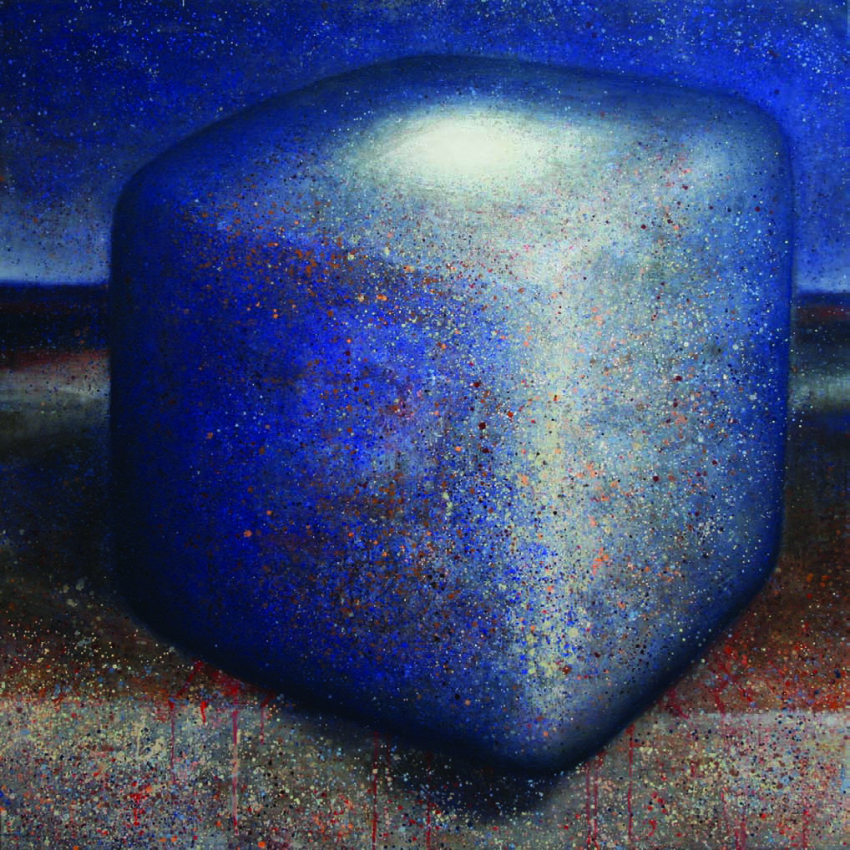
Daniel Jodet
“...the sculptures of Daniel Jodet are set solidly in reality. The need to make sculpture be not too precious leads him to create pieces that exist in the surrounding space. This also coincides with the creation of themes. Instead of op- posing the figurative and abstract, he attempts to unify them. His work is an assemblage of different materials that complement one another.” – Marie-José Rodriguez, Musée National d’Art Modern Centre George Pompidou
Artwork
Jonchet VI, elm and concrete, 230cm x 16.5cm
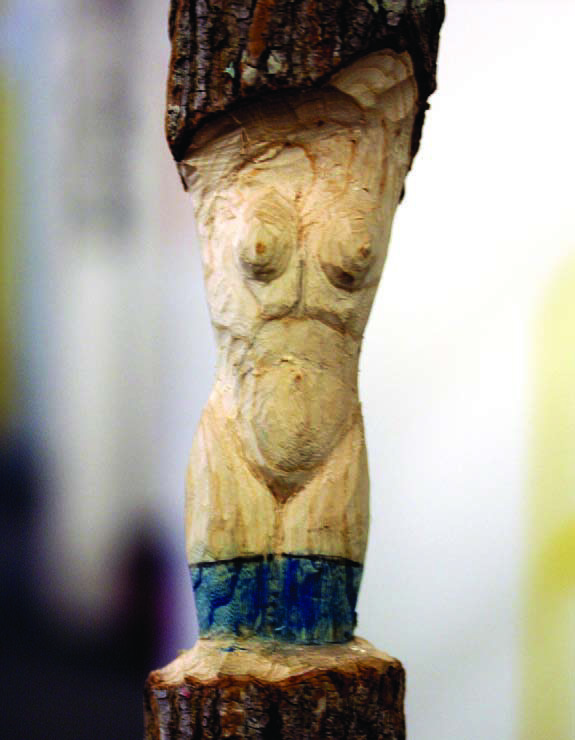
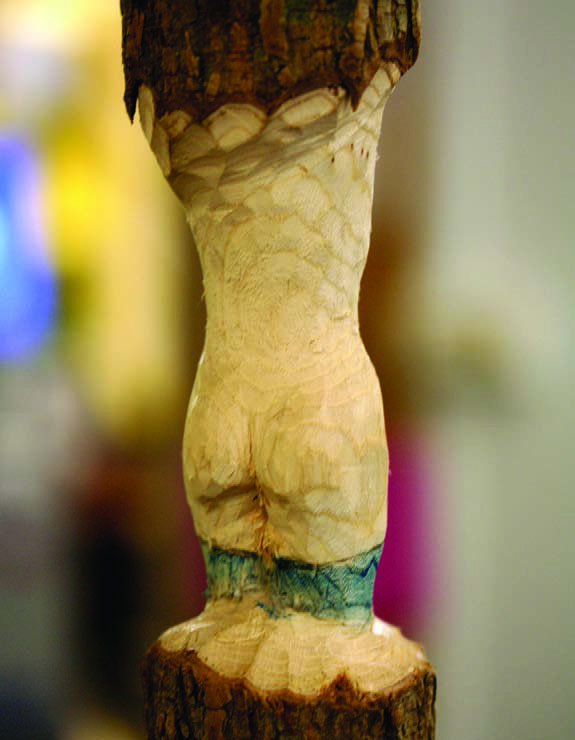
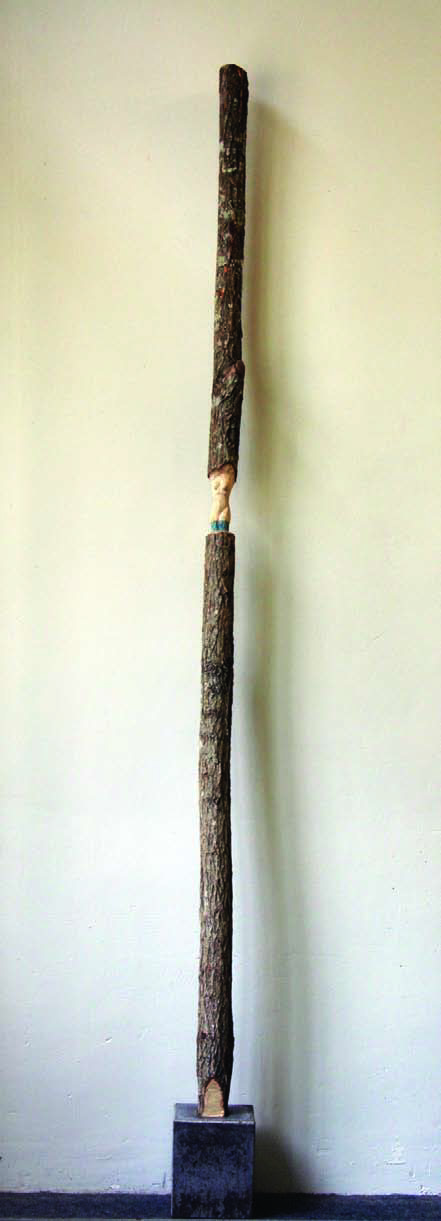
Alfred Kessler
My aim is to represent a few human emotions – love, loss, desire, fear – qualities that are common to all people and which I believe have not changed with time, style of life or sophistication of society. The human forms depicted are devoid of all signs denoting culture or epoch. You see only man and woman in the ecstasy of their emotion sur- rounded by a rather hostile environment of which they are usually largely unaware. Despite our different ap- pearances, ideologies and thoughts, our human emotions are all the same. They unite us if nothing else does.
Artwork
Si (If), acrylic on canvas, 130cm x 97cm
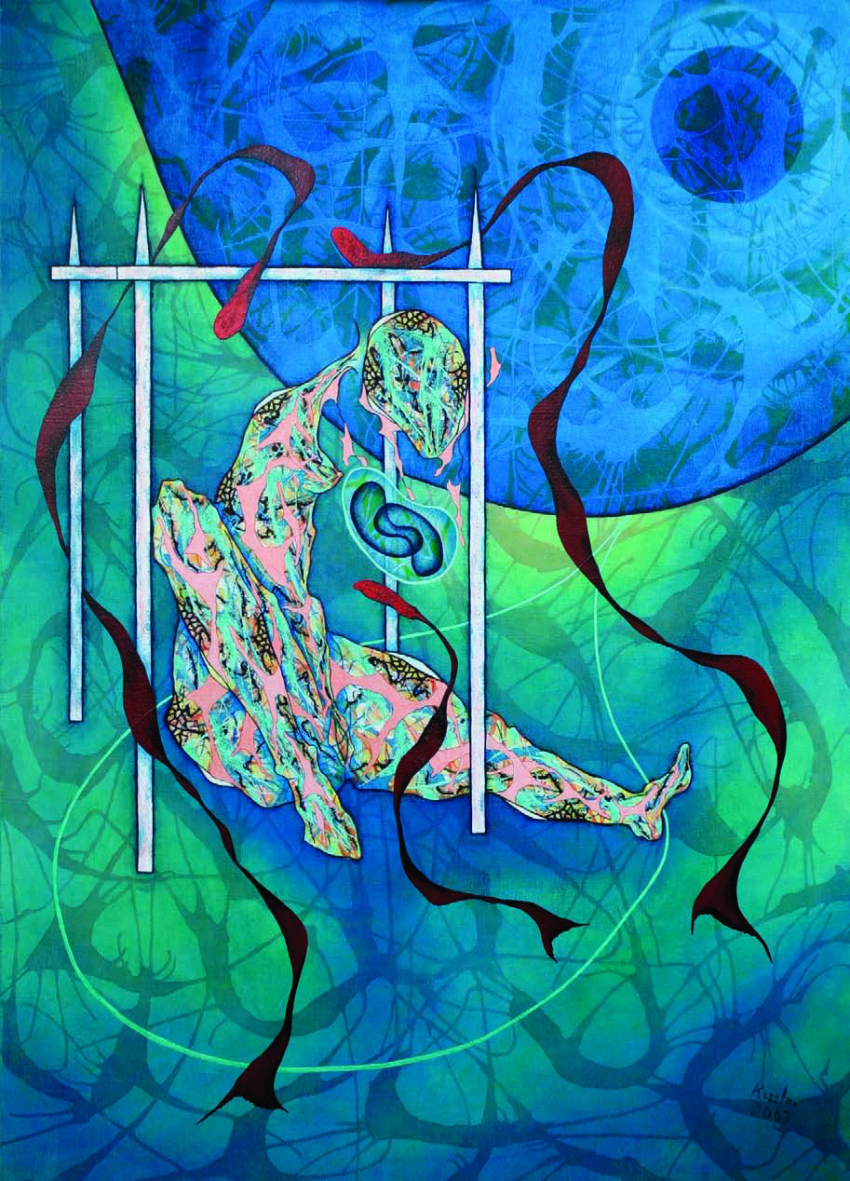
Robbie Lacomb Roach
The etchings are all abstract, reflecting the shapes and colors of remembered environments and experiences, some with nature, some with human created phenomena. Shape, texture and color dominate the formal consider- ations of all these works, and really serve as vehicles for the meaning in the work.
Artwork
Left to right: Desert Willow II, etching, 38cm x 29cm; Casbah Nights, etching, 29cm x 38cm
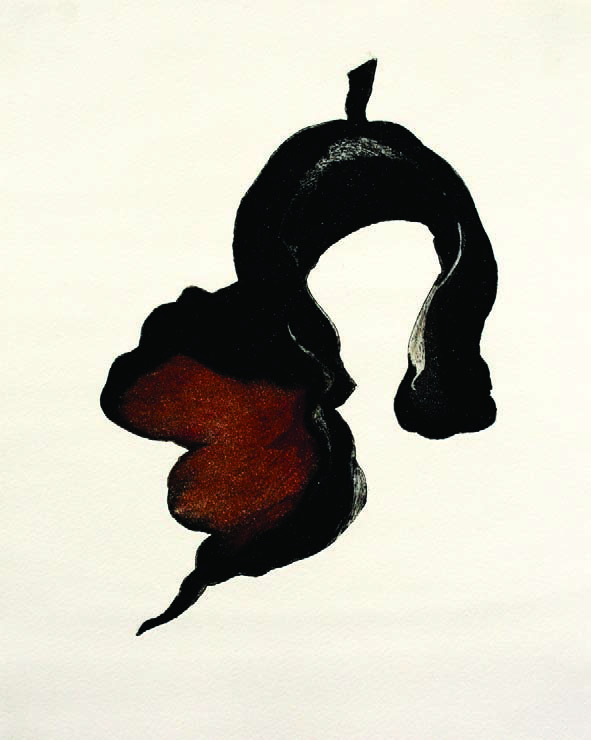
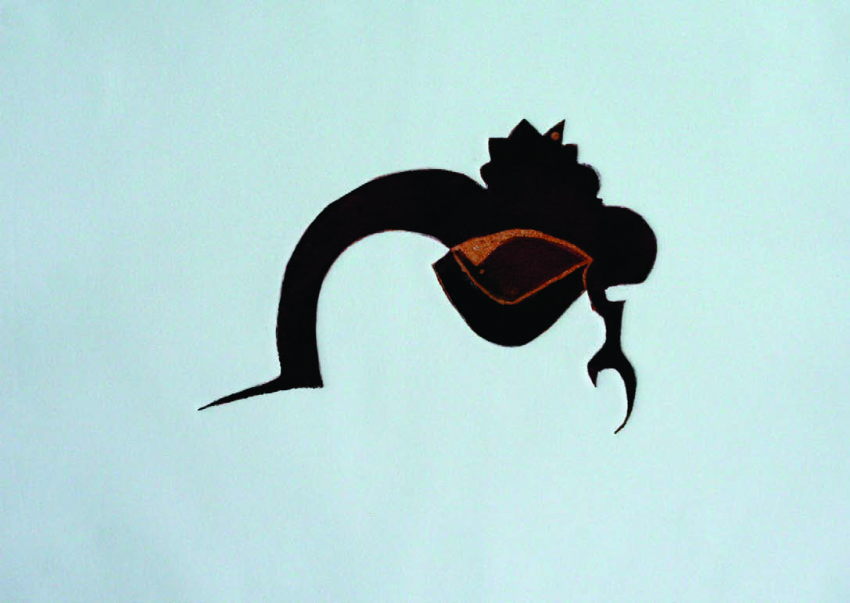
Pierre Lancelin
A text about my artwork. Sure! I studied at the École des Beaux-Arts in Paris, and I continue to draw and produce lithographs and etchings every day. I’ll describe what happens when, a brush in hand, with black ink and water, I face a white page. I know all about the famous story of the writer, terrorized by the blank page. It’s not that I don’t have an idea, but an idea, a thought, is not enough to start. To make it work, my hand, my arm, my body all have to be involved; I have to immerse myself totally into the bath of my drawing. I have to be awash in ink. And for that, I have to believe in what I do, believe that it’s true, that it will appear in front of me—a visible presence, but one that’s also physical, emotional, authentic, alive, and which is far beyond myself. So, overtaken by my subject, by the motif, the goal, my hand and spirit are one. I am nothing more than a human being who paints, a voice in a symphony, a great symphony.
Artwork
Left to right: Passage Pieton, lithograph, 28cm x 19cm; Untitled, lithograph, 41cm x 65cm
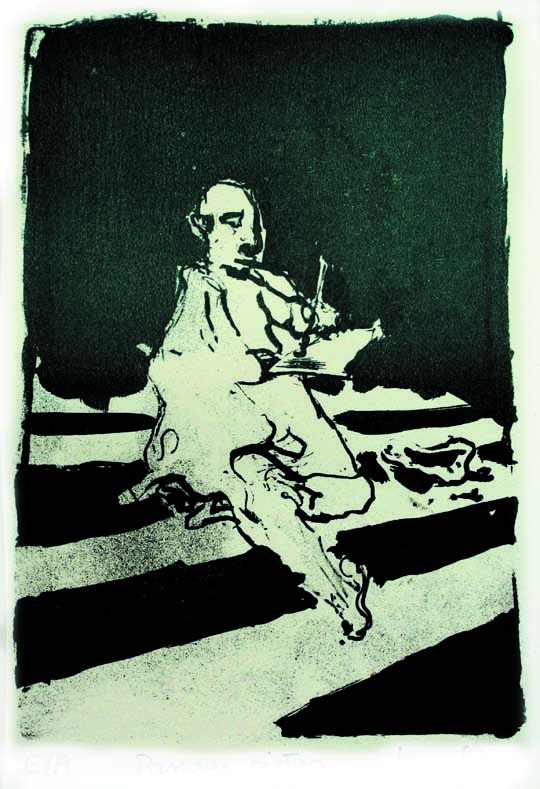

Helen Later
As an actor, I observe people. My job is to represent them, to give expression to the essence, the soul of a person. The art of theatre is transitory, of the moment. As a graphic artist, I try to fix that moment and capture it forever. A breath, a sensation, an emotion passes through the human body and then is gone. These drawings are an attempt to recreate the beauty of that instant.
Artwork
Emelie, graphite on paper, 63cm x 40cm
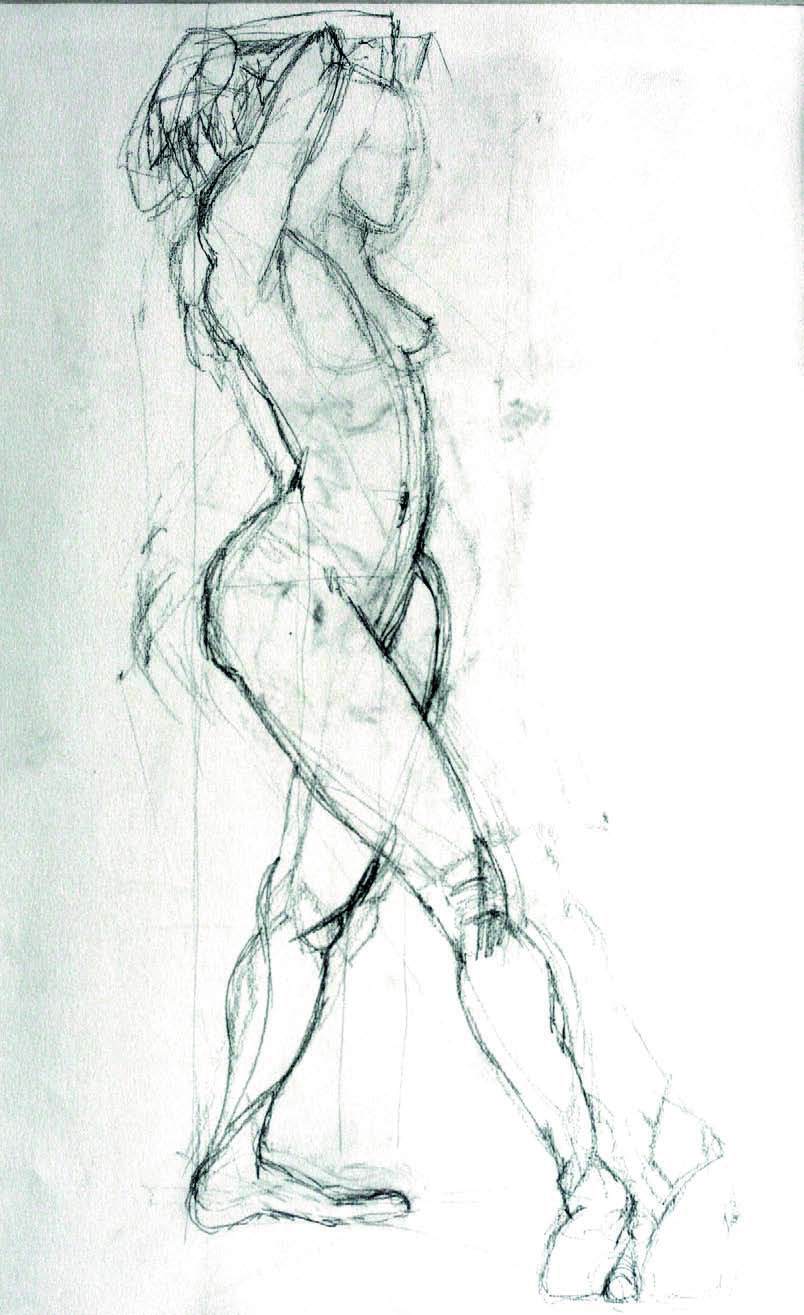
Marie-Sophie Madre
No boundaries, no limits,
Layers of colors, of pastels,
Lines in charcoal drawn or not.
Extension of our brain: gesture.
Being able to combine in a piece of art. The complexity of an adult, his maturity. And her fresh approach as a young person. Multiplicity of a character.
Artwork
Femme Africaine, mixed technique on canvas, 116cm x 81cm
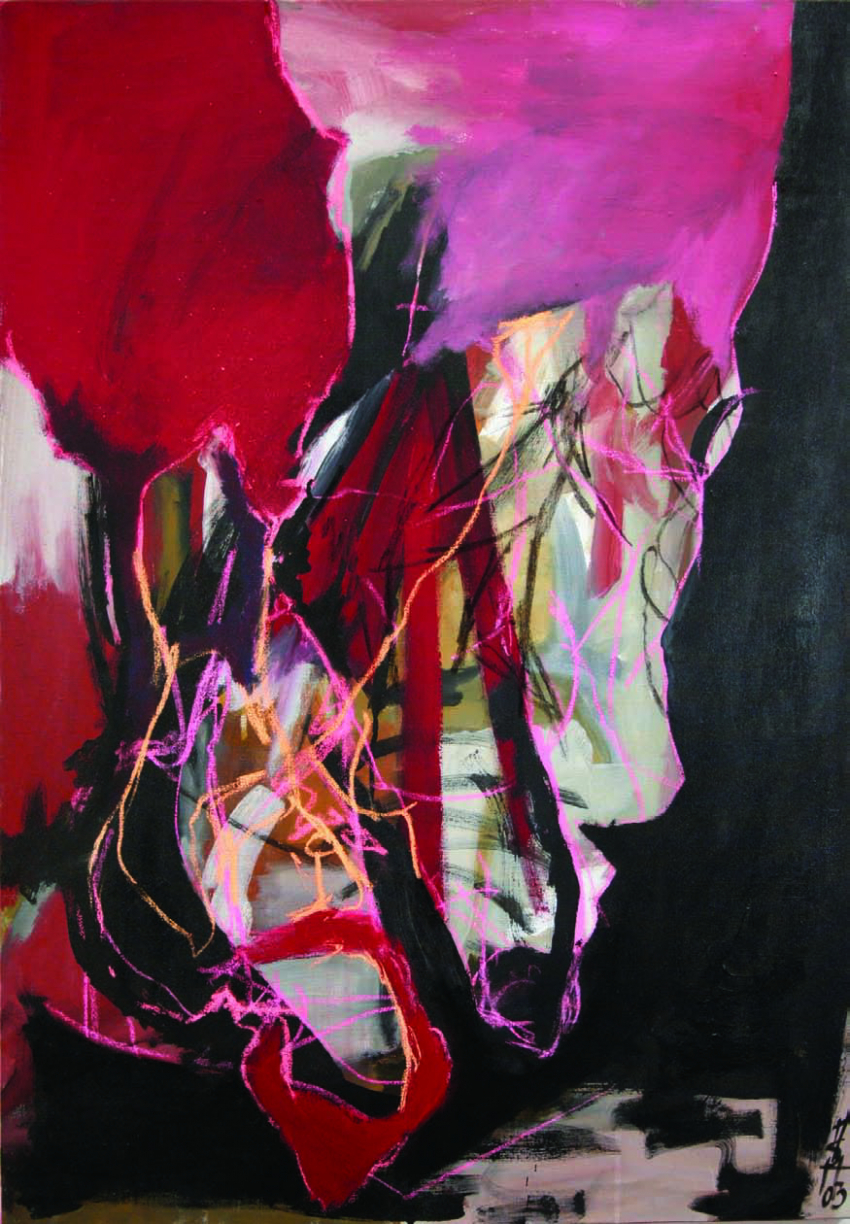
Bob Meyer
My drawings, prints and paintings are part of the journal. After all, life perceived in a certain way, can be compared to one grand suicide note.
Artwork
Left to right: Horror, lithograph, 23cm x 18cm; Shopping, lithograph, 30cm x 24cm; Rwanda, graphite on paper, 30cm x 21cm
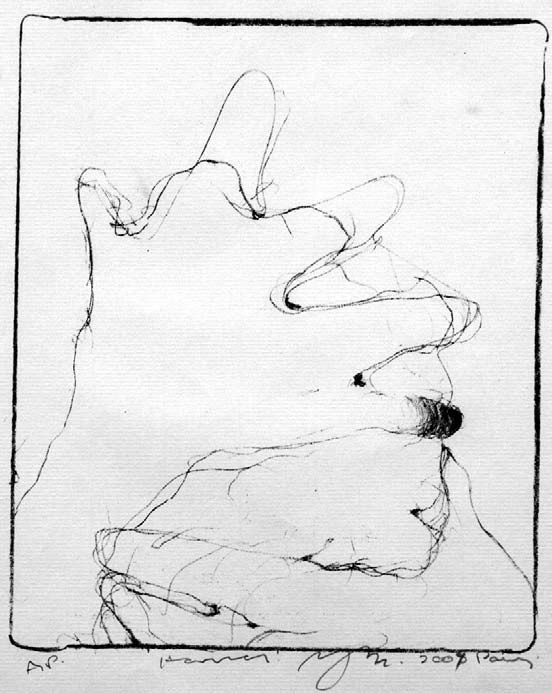
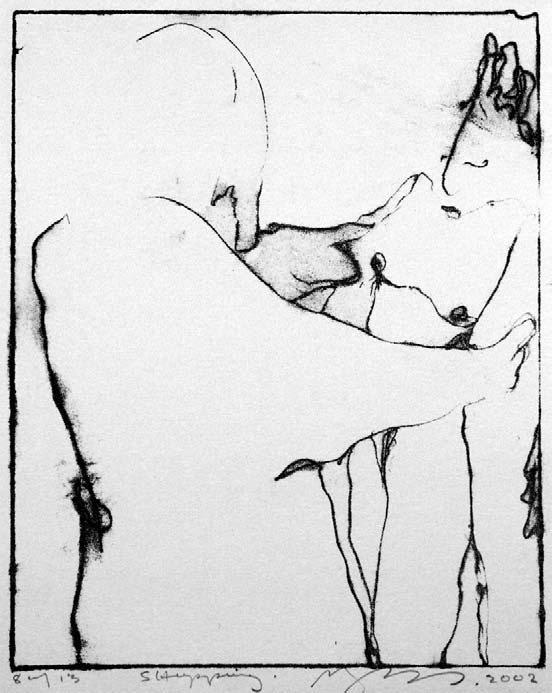
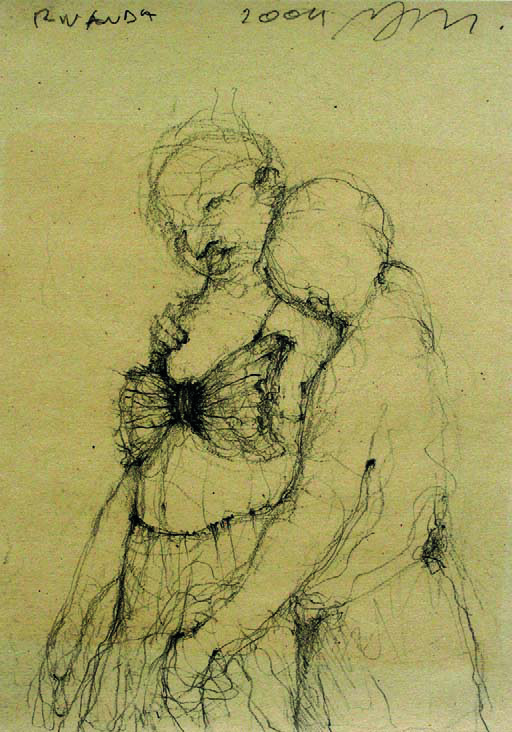
Robert Ogle
The photographs exhibited in this show were derived from a much larger project I have entitled “The Production of Capital Space”. The work is centered on appropriation, perhaps better stated as a “reading” of the experience of the city. Drawing an analogy between that experience and what is essential to any silver-based image, as opposed to digital image, namely, as a fragment of the real.
Artwork
Photo from the series Production of Capital Space, photograph, 28cm x 41cm
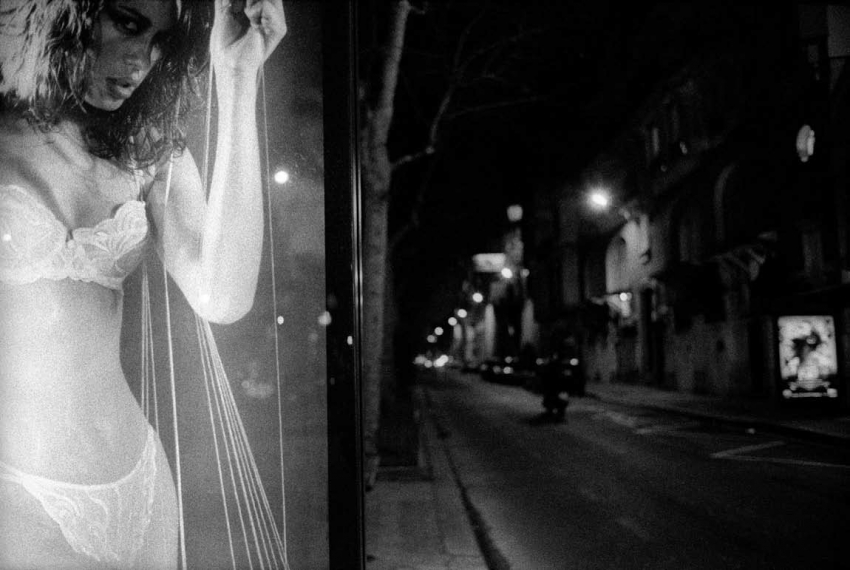
Ralph Petty
After many years of painting, the process is still mysterious to me, these illusions taking shape and colors shifting, as the image gradually rises to the surface. The sensual world appears, transforms itself as the light changes, then disappears from view altogether. Another layer of paint, another memory passed, the enigma deepens. I am more and more interested in the natural world, from plant growth to the architecture and spirit of woman. The beauty of it all pulsates through this animated universe and I want my paintings to leave a visual trace of that pulse.
Artwork
La Tempete, oil on canvas, 116cm x 81cm
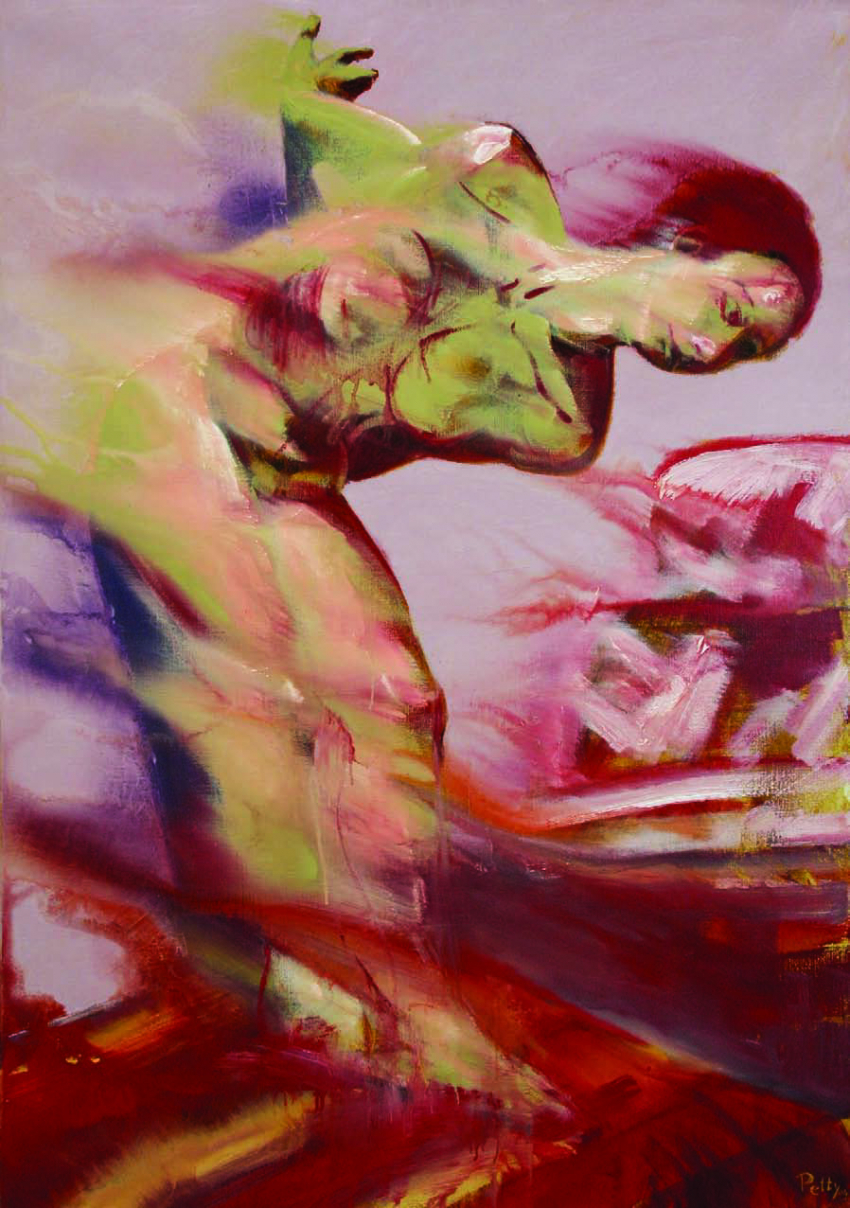
Maria Martha Pichel
"Like the thick mist in the telling of a dream, Maria brings the mythical past of her land to painting. She proposes her imaginary musings, infusing into her story the pos- sibility of individual participation, with nostalgic stories that emerge from the culture of a people. Tangos, Indians, cafés carry within the weave of her painting the symbols of a history, illustrating with a sensitive touch the integra- tion process of the assimilated immigrant." – Renato Rita
Artwork
Cat’s Coffee, acrylic on canvas, 195cm x 130cm
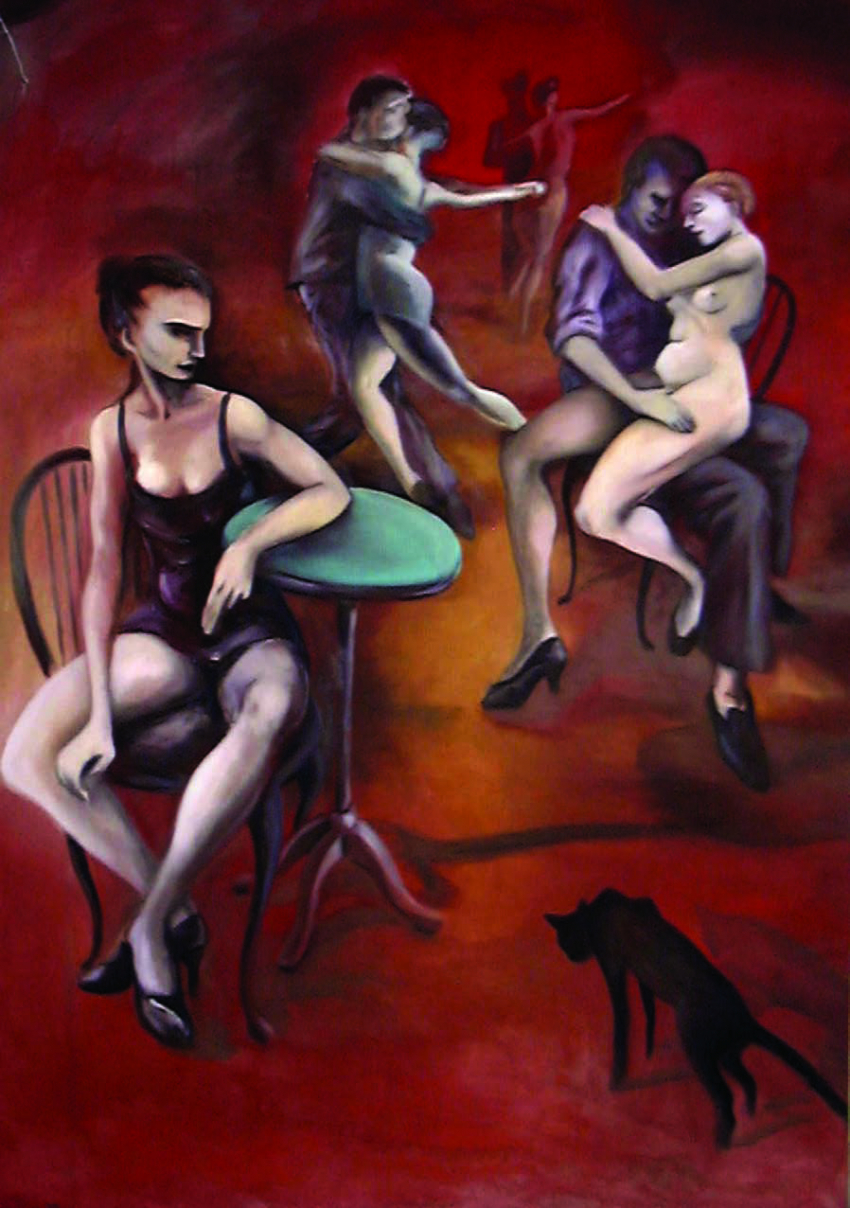
Michael N. Roach
The goal of the artist is to make a statement. Whether the statement is about life, nature, society, emotions, conditions, or events, is often of consequence only to the artist at that instant of time. Not every statement need be made of el- ements that produce a booming crescendo or controversy. Sometimes the artist simply says, “I saw this thing, this place, or this moment; and I saw it in this way. I want to show it to you.” Thus, the statement can at times be nothing more than a quiet affirmation. The better the skills of the artist, the closer they come to producing a statement understood by a larger segment of the population. The artist often tries to show the viewer a commonplace sight through a new viewpoint—hopefully, a viewpoint that excites the viewer or causes that viewer to reexamine the scene or moment—and find new truths and relationships in those elements. I have long been fascinated with the forms that mankind forces upon nature. The straight line is predominantly an element that occurs when man attempts to control nature or forge or shape natural elements. Nature rebels and works its biomorphic forms in an infinite variety of responses. Many of the photographs I take are of nature as I saw it at that moment; others are created images of nature as I sought to re- shape it. The viewer is invited to decide whether an image is real or created. The computer and the digital camera are the ultimate collaging tools; limited only by the artist’s vision.
Artwork
Left to right: Phylodendrum, photograph, 56cm x 40cm; Tree in Fog, photograph, 24cm x 56cm
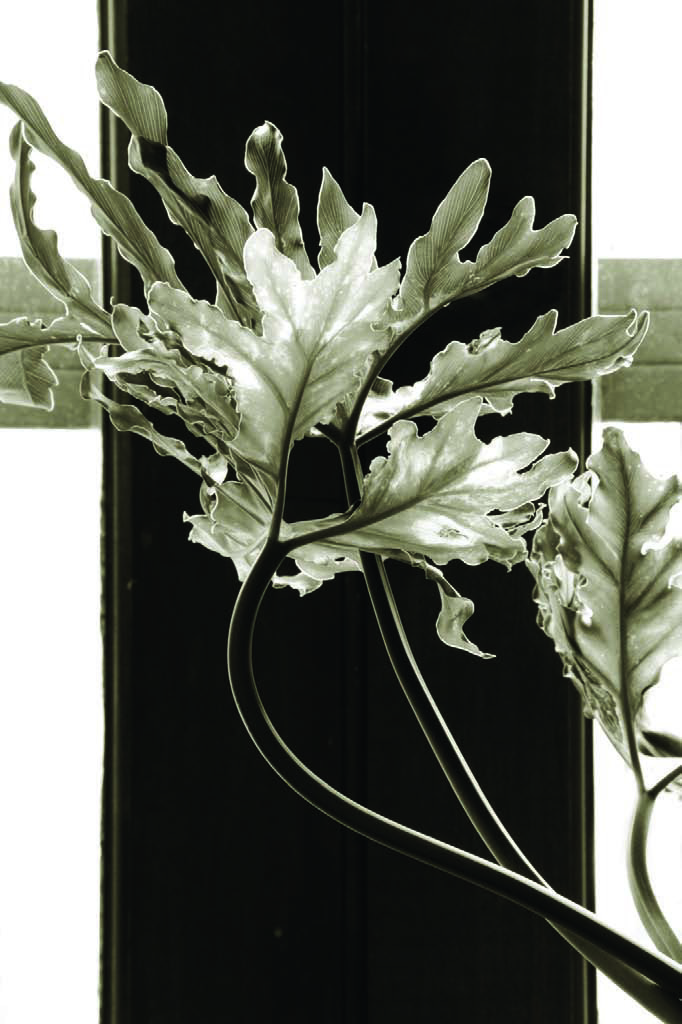
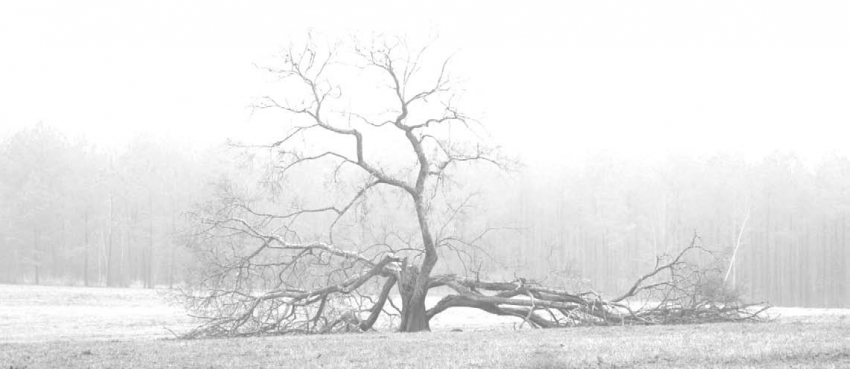
Georgia Boyd Russell
Georgia Russell manipulates, cuts, and transforms books, music scores, and maps. She resurrects her chosen materials for a new life and gives them new poetic mean- ing. Georgia chooses her materials because they talk of their own history. They represent the many hands which have held them and the minds they have passed through. In Georgia’s universe books are re-invented and trans- formed. The process of reading and writing is visualized in her time consuming sculptures. The act of cutting is another representation of how we consume books and how we “become” what we read or write. It’s as though we devour the books and keep fragments of them inside us. Time passing is expressed by the obsessive process she applies and the actual act of manipulation throws the paper and texts into other realms of meaning. Georgia invents a world where the creation and consumption of paper exists at the same time. The materials become part of our body, mind and spirit. Flourishing and fading, calm and opulent they are in a flux between living and dying.
Artwork
Les Pensées, cut book in plexiglass case, 34.5cm x 22.5cm x 10cm
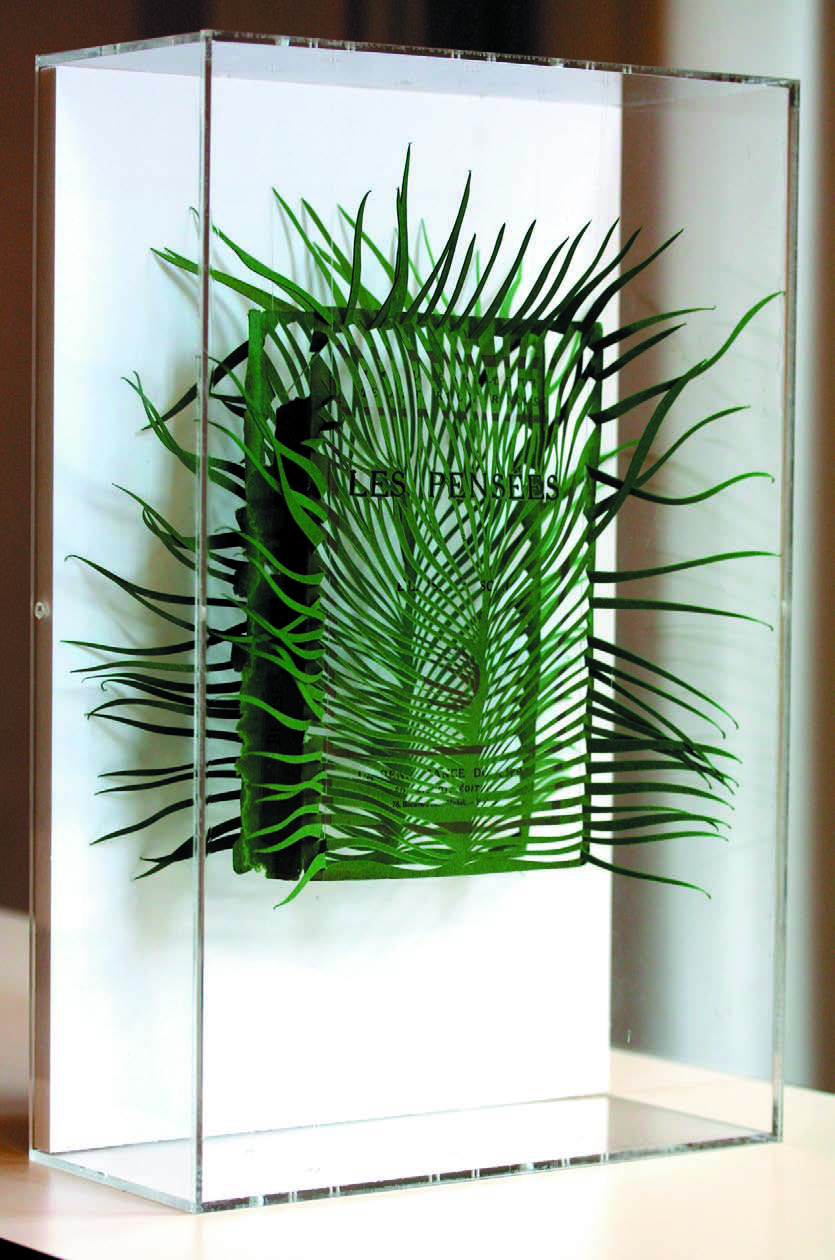
Frances P. Ryan
Frances was a nomad and, still is in her heart. Amongst other adventures she drove overland from Paris to India and back, has driven around Australia living with the aborigines, lived with the headhunters in Borneo, and finally met Mother Teresa in Calcutta. Following this encounter which changed her life, she did a paramedical degree at the Sorbonne. Taking color photography all those years, Frances came upon an exhibition of Ansel Adams in Big Sur in 1992–the desire to take black and white photos was born, and confirmed, by a later exhibition of Edward Weston. However, it was not realized until she came back from a sabbatical year of diving. Relaxed, her creative mind came to the fore and she started doing black and white photos of her adopted city of Paris five years ago. She continues the work with Special Needs Children but finds the time to carry on her nomadic excursions into the city. Her photos have been exhibited in Cape Cod, U.S., and are exported to four out of five continents by the expatriates who share her love of Paris.
Artwork
Tempest, photograph, 29cm x 20cm
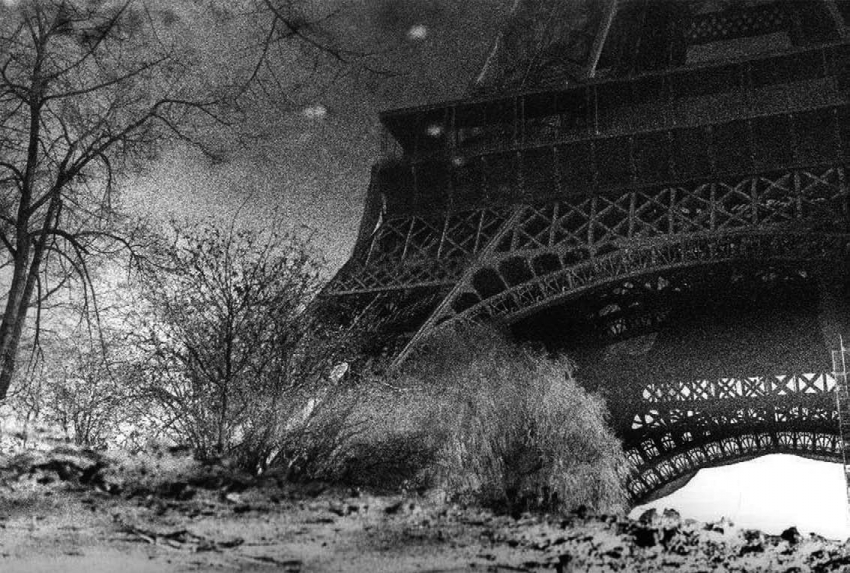
Iran Do Espírito Santo
Espírito Santo is best known for his sensuous minimal work that deals with issues of place, structure, material, design, and surface with a rigorous conceptual sensibility. Espírito Santo has exhibited widely in museums and galleries worldwide; his works are included in the collections of many prominent international museums including the Museum of Modern Art, New York; The Museum of Mod- ern Art, San Francisco and the Museum of Contemporary Art, San Diego. Espírito Santo’s works have been included in the Venice Biennale, Venice, Italy, the Bienal Internacional de São Paulo, São Paulo, Brazil and the Istanbul Bien- nial, Istanbul, Turkey.
This work was donated by Willem Peppler, former chair of the board at AUP and international art collector.
Artwork
Untitled, acrylic on canvas, 72cm x 84cm
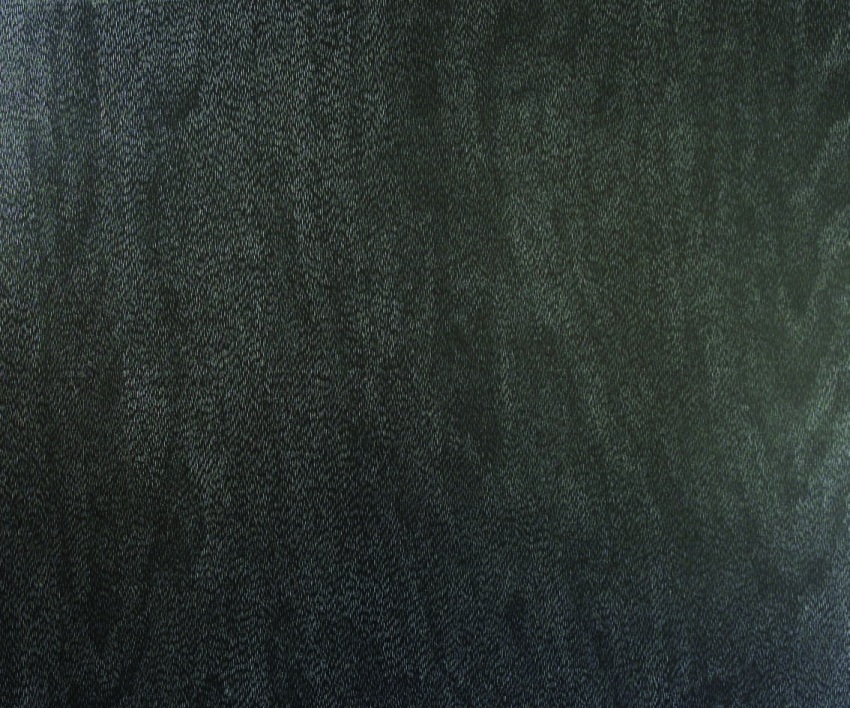
Diego Vegezzi
I have always used structures: the Eiffel Tower, baskets, roller coasters, buildings. They have been the inspiration for my compositions.
Artwork
Plaza del Popolo, acrylic on canvas, 38cm x 46cm
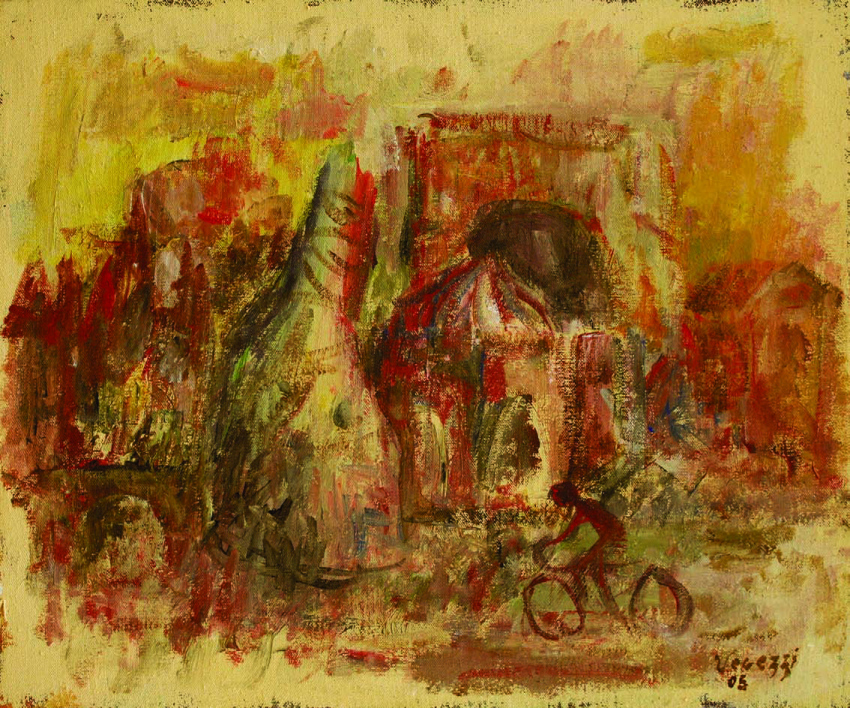
Other Donations
Anonymous Donation
- 2 Pierre Soulage Etchings & 1 Paul Rebeyrolle Lithographic Print
André Beccafico Donation
- 24 French World War I Lithographic Posters
Evelyn Berezin Donation (expected March, 2020)
- 3 Bronze Sculptures by Dimitri Hadzi
- 2 Oil Paintings
- 1 Ceramic High relief Wall Sculpture
- 3 Woodblock Prints
Maud Brit Donation
- 2 Plaster Sculptures & 3 Lithographic Collages by Maud Brit
Cynthia Hadzi Donation (expected March, 2020)
- 4 French Prints
Ralph Petty Donation
- “Listening” Carved Stone Sculpture by Ralph Petty
Jonathan Shimony Donation (Prints from the Shimony Presses)
- Joe Neill - Tower I Lithographic Print & Tower II Lithographic Print
- Ignacio Fabré - 3 Abstract Lithographs
- Dana Shea - Cactus I Lithographic Print & Cactus II Lithographic Print
- Rafael Mahdavi - Broken Sunglasses - Lithographic Print
- Leslie Greene - 1 Lithographic Print
- Hachiro Iizuka - 1 Silk Screen Print
- Jean-Claude Luton - 1 Lithographic Print
- Claire Illouz - 1 Etching
- David Pushkin - 1 Lithographic Print
- Francks F. Deseus -
- The Crowd I - Lithographic Print
- The Crowd II - Lithographic Print
- The Crowd III - Lithographic Print
Jonathan Shimony Donation (work not made in the Shimony Studio)
- 2 Wall Paper Samples from the 1950’s
- Anonymous I - 3 Abstract Paintings on Paper
- Anonymous II - 1 Large Orange and Black Etching
Donations by Artists Who Exhibited in the AUP Fine Arts Gallery
- Christine Ankaoua – 1 Abstract Painting
- Syrian Children’s Art – 4 Drawings (made by children in Syrian refugee camps)
- Adrien Lee – 2 Woodblock Prints
- Florence Pinel – Kangaroo Boxer - Oil Painting
- Linda Cunningham – 1 Collage
- Michael Kolster – 12 Collodion Print Photographs
- Daniel Aaron Schwartz – 1 Oil Painting
- Gina Werfel – 1 Abstract Oil Painting
- Yoshie Araki – 2 Woodblock Prints of Fish
- Limousin – Metal and Glass Collage
- Alexis Manchion - 2 Photographs of Interiors
- Stéphane Treilhou – 1 Oil Painting & 2 Etching
- Mostyn Bramley-Moore – 1 Abstract Painting on Wooden Panel
- Kevin Wixted – 1 Large Oil Painting of Flowers
- Maria Scarpini – 1 Black & White Oil Painting
- Katherine Dolgy Ludwig – Watercolor Painting
- Linda McCune – Etching
- Laurie Raskin – Large Acrylic Painting
- Sophie Hong – 2 Giclée Prints
- Bunny Harvey – Small Oil Painting on Paper
- Yuho Takahashi - 2 Calligraphic Drawings on Japanese Paper
- Yveline Etienne - 1 Chemigram Print
- Murielle Kabile - 1 Photograph on Metal
- Rafael Mahdavi & Jonathan Shimony - “Open Book” welded steel sculpture
THE AMERICAN UNIVERSITY OF PARIS ©
